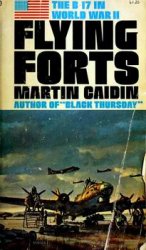From time to time America has gone through periods during which various movements were underway to improve aspects of American culture. Many of those reform movements were centered on associations or organizations created for just that purpose. One of those was the temperance movement, an effort that grew out of the fact that Americans were prodigious consumers of alcohol. Thousands of distilleries produced millions of gallons of various alcoholic beverages, including whiskey, beer, wine, hard cider, and other consumables. The average consumption of alcohol among Americans was several ounces of alcohol per day, a rather startling figure when one considers that the young, old and many women consumed very little alcohol. Those who did drink drank a great deal, sometimes with serious consequences for themselves and their families. In 1833 the American Temperance Union was formed to try to promote responsible drinking.
Some of those reformers took a hard line and insisted on absolute abstinence from alcohol. More moderate temperance reformers merely urged people not to drink to excess, something which people addicted to alcohol could handle only with difficulty. In various regions experiments were made with closing taverns or cutting off sales of alcohol under various conditions, and many towns went dry during the 1830s and 40s. Although efforts to control drinking were less than completely successful, the per-capita consumption of alcohol was reduced between 1830 and 1860. Following the Civil War, the softer temperance movement evolved into the more severe prohibition movement, which finally achieved victory with the 18th amendment passed in 1919.
It is interesting to note that one of the first public speeches given by young Illinois politician Abraham Lincoln was on the subject of temperance.
The temperance movement was but one effort to create something approaching a utopian society. Often driven by religious fervor, groups of Americans began to form various utopian communities, some of which were short lived, others of which persisted into the 20th century. One such religious group were the Mennonites of Pennsylvania, who based their community upon literal interpretation of the Bible and who sought to prepare themselves for what they believed was the coming millennium. Another religious society which grew up in New York state were a group that believed in the second coming of Christ and whose enthusiastic dances lead them to be called Shakers. Shaker communities spread throughout the Northeast, and that group reached its peak membership between 1830 and 1860.
Other utopian groups included the Oneida community, which started in Vermont; the New Harmony community which grew up in Indiana; and Brook Farm, best-known of all utopian communities because illustrious figures such as Ralph Waldo Emerson and Margaret Fuller supported it as it grew in New England in the 1840s.
The Second Great Awakening. The utopian communities, often driven by religion, rarely lasted more than a few decades, but the religious spirit of the age had more lasting effects. The religious intensity of the American people grew into what became known as the Second Great Awakening. The religious spirit found fertile ground among people moved by the romantic notion of America's special place in the world. Many Americans came to believe that America was destined, perhaps by God, to be an example to the rest of the world, much like the old Puritan idea of New England as a "city upon a hill." The Unitarian movement that centered on Boston was one manifestation of newer forms of religion.
Much of the Second Great Awakening took place in the frontier regions of America. Pioneers who settled the frontiers often found themselves removed from their fellow settlers. They were hungry for social and spiritual interaction with others. Various Protestant denominations, such as Congregationalists, Presbyterians, Baptists, Methodists, and others followed evangelistic impulses and called for a revival of religious feeling. Many of the frontier meetings took place in what were known as camp meetings, assemblies of people who came from considerable distances and camped in wagons or tents. Many of the religious celebrations were exuberant to the point of strangeness, as people spoke in tongues, barked like dogs or expressed themselves in other bizarre ways. Such was the enthusiasm in western New York that a large area in that part of the state became known as the "burned over district," centered around a fiery preacher named Charles Grandison Finney. Thousands of people converted themselves to the Christian faith from his preaching.

The most prominent group to emerge out of the burned over district of New York was the Church of Jesus Christ of Latter-Day Saints, known as the Mormons. The Mormon faith was founded by Joseph Smith, who claimed that an angel had directed him to some buried golden tablets, which he translated into what became known as the book of Mormon. The Mormons attracted thousands of converts who were promised a pure community centered around Christ in America.
The Mormons were a very close-knit community and professed their righteousness in ways that caused friction with their "Gentile" neighbors. They moved from New York to Ohio, different areas in Missouri, and finally settled in Nauvoo, Illinois, where they remained for five years. Because some members of the Mormon Church practiced polygamy, violent resistance to the group arose, and Joseph Smith was killed by a mob. Smith's successor was Brigham Young, a strong, intelligent and forceful man who led the Mormons on their final trek to the Great Salt Lake basin in Utah. Although
Young believed that God would guide his flock, he was a careful organizer and prepared the way for his followers to make the journey by setting up way stations along the trail. The first Mormons arrived in the Salt Lake area in 1847 and found what appeared a desolate wilderness. But soon they created irrigation systems, and through cooperation and industry they brought the desert into bloom.
The Mormons organized their own state called Deseret, planning to establish perhaps a separate nation, which might stretch to the Pacific. Congress, however, created the Utah territory, and with Brigham Young as governor, the Mormons established control of the entire territory. Mormons are still the dominant culture in Utah and areas that border their state.
Education Reform. Partly because of the belief that good Christians should be able to read the Bible, education took hold early in colonial America. Spurred by Jefferson's belief in the value of education for a self-governing people, movements to provide free public education for all young people spread across the nation. Although America already had what was probably the highest literacy rate in the Western world, most education was conducted at home, in church or by private tutors. By 1830 state-wide school systems had not yet been developed. An early adopter, New York City had established a Public School Society in 1805, and by 1850 New York City schools had educated some 600,000 youngsters.
It was easier to establish schools in the more densely populated regions of the country; thus education tended to be centered more in the Northeast and in the areas of the cities than on the Southern and Western frontiers. In Massachusetts Horace Mann led the movement for statewide education systems and fathered many reforms, including "normal schools" for the education and training of teachers. Mann and other reformers preached the value of education for its democratizing effect and persuaded citizens that it was in their best interest to pay taxes for the support of schools. By 1860 the public school movement had spread to parts of the South, but literacy remained highest in the band from New England across New York, Pennsylvania and Ohio.
At the time of the Revolution nine colleges had been founded in the United States. Following the Revolutionary period, some 50 additional institutions of higher education were created, although not many survived. By 1840, however, over 70 colleges and universities existed, many of them as church related schools. Following the example of Jefferson's University of Virginia and the United States Military Academy at West Point, which had been founded in 1802, more practical and technical college curricula were developed to replace the theologically oriented programs of study established at the religious-based colleges. Among the earliest state colleges established were agricultural and mechanical colleges which eventually became Michigan State and Pennsylvania State universities.
Most colleges limited their enrollment to males. Women such as Emma Willard, however, began to create female seminaries which often had curricula that devolved into increasingly practical courses of study. Oberlin College in Ohio provided both biracial and coeducational opportunities for learning, though female students were not accepted on an equal basis.
Side by side with the development of colleges and secondary schools were various associations and institutes that offered free education to the general public. Some of them offered evening classes for working people, and traveling lecturers and experts spoke on a variety of topics, including mathematics, geography, literature, and other fields. At about the same time, a movement to create public libraries surfaced to satisfy Americans' apparently unquenchable thirst for knowledge. (Benjamin Franklin invented the first lending library, The Library Company of Philadelphia, in 1731.)




 World History
World History









